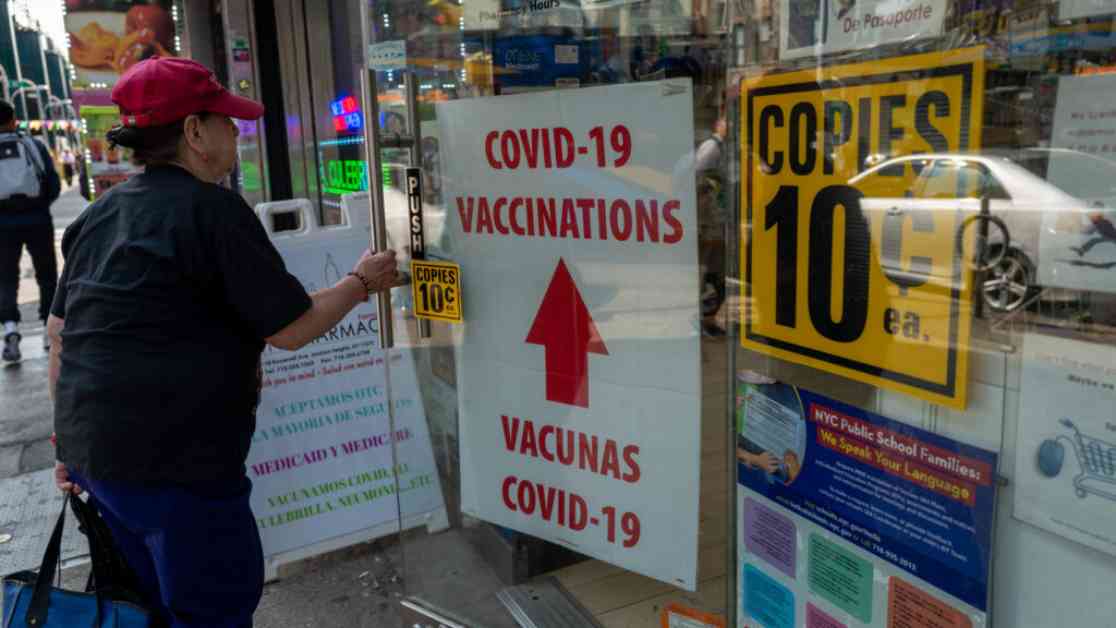As autumn approaches, public health officials are gearing up for the seasonal vaccination campaigns to protect Americans against influenza, Covid-19, and respiratory syncytial virus (RSV). These viruses tend to peak during the winter months, putting immense pressure on hospitals and healthcare systems. The traditional advice is to get vaccinated for all three diseases simultaneously to streamline the process and ensure maximum compliance. However, is this one-size-fits-all approach truly the best option for everyone?
The timing of seasonal vaccines is crucial for maximizing their effectiveness, but it is not an exact science. Factors such as when each virus typically peaks, the duration of immunity provided by the vaccines, and individual risk factors all play a role in determining the optimal timing for vaccination. Experts emphasize the importance of considering these factors when deciding when to get vaccinated.
Factors to Consider
One of the key considerations when timing seasonal vaccines is the potential overlap in peak seasons for different viruses. While we often refer to the “cold and flu season,” the reality is that influenza and Covid-19 may peak at different times in different years. This variability makes it challenging to predict when each virus will pose the greatest risk, complicating the decision-making process for vaccination timing.
The duration of immunity provided by vaccines is another crucial factor to consider. Vaccines for Covid-19 and influenza offer protection that diminishes over time, meaning that getting vaccinated too early may result in reduced effectiveness during peak transmission periods. Understanding the timeline of immunity provided by each vaccine can help individuals make informed decisions about when to get vaccinated.
Individual risk factors, such as age, underlying health conditions, and exposure to high-risk environments, should also be taken into account when timing seasonal vaccines. Certain populations, such as older adults and immunocompromised individuals, may benefit from earlier vaccination to ensure optimal protection against severe illness.
Expert Recommendations
Experts recommend that individuals who are only able to schedule one vaccination appointment prioritize getting their flu and Covid shots together. This approach maximizes convenience and compliance while ensuring that individuals receive protection against both viruses. The Centers for Disease Control and Prevention (CDC) supports the simultaneous administration of these vaccines to streamline the vaccination process.
For those who can schedule multiple vaccination appointments, experts suggest considering the timing of each vaccine based on individual risk factors and peak transmission periods. Factors such as the duration of immunity provided by each vaccine and the seasonal patterns of each virus should be taken into consideration when determining the optimal timing for vaccination.
Timing Covid-19 Vaccines
The current surge in Covid-19 cases adds complexity to the decision-making process for timing Covid-19 vaccines. Individuals eligible for multiple Covid-19 shots per year, such as older adults and immunocompromised individuals, should consider getting vaccinated early to ensure continuous protection against the virus. Factors such as the duration of immunity and the risk of exposure should guide the timing of Covid-19 vaccinations.
Experts emphasize the importance of balancing the immediate need for protection against Covid-19 with the potential benefits of delaying vaccination to align with peak transmission periods. While getting vaccinated early may offer immediate protection, waiting to vaccinate closer to peak transmission seasons may provide enhanced protection during periods of high virus circulation.
Timing Flu Vaccines
Flu season typically peaks in the winter months, making it essential to time flu vaccinations appropriately to maximize effectiveness. The CDC recommends getting the flu shot by the end of October to ensure protection before the peak of flu season. Factors such as the duration of immunity provided by the flu vaccine and the seasonal patterns of flu activity should guide the timing of flu vaccinations.
Experts advise waiting to get the flu shot until flu activity is circulating in the community to ensure optimal protection throughout the flu season. Delaying vaccination until flu transmission is sustained can help individuals avoid the risk of waning immunity and ensure continuous protection against the virus.
RSV Vaccine Considerations
For older adults eligible for RSV vaccines, the timing of vaccination is crucial to protect against the virus during peak transmission periods. RSV season typically begins in the fall and peaks in the winter, making late summer or early fall an ideal time to get vaccinated. Factors such as age, underlying health conditions, and exposure to high-risk environments should guide the decision to get an RSV vaccine.
Pregnant individuals should also consider the timing of RSV vaccination to protect their babies from the virus after birth. The CDC recommends getting an RSV shot between week 32 and week 36 of each pregnancy for pregnant individuals giving birth during the RSV season. Factors such as the risk of exposure and the timing of peak RSV transmission should inform the decision to get vaccinated.
In conclusion, timing seasonal vaccines requires careful consideration of various factors, including the duration of immunity provided by each vaccine, individual risk factors, and the seasonal patterns of virus transmission. By understanding these factors and consulting with healthcare providers, individuals can make informed decisions about when to get vaccinated to ensure optimal protection against seasonal viruses.

















